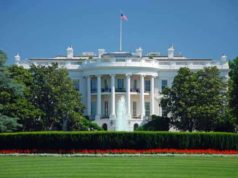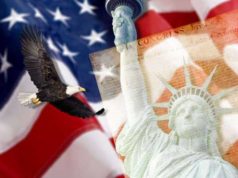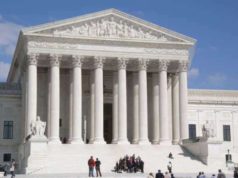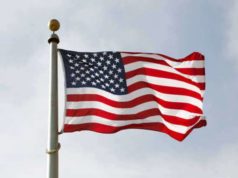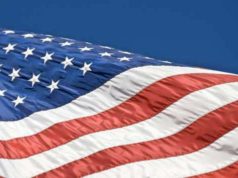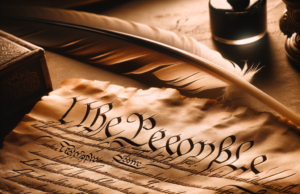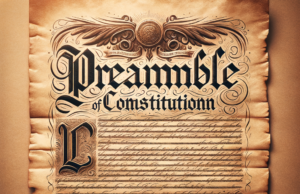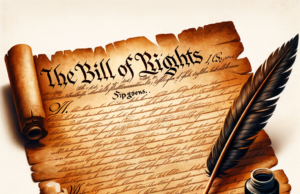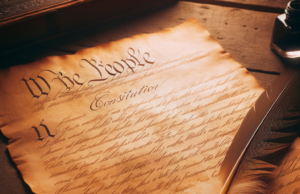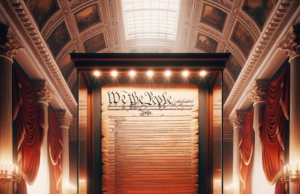
John Hancock: The First Signer of the Declaration of Independence
John Hancock is most famous for being the first person to sign the Declaration of Independence. However, he was much more than just a signer – he was a businessman, politician, and revolutionary who played a key role in the early history of the United States. This article will provide an overview of John Hancock’s life and his contributions to the United States.
Early Life:
John Hancock was born in Braintree, Massachusetts, in 1737. His father died when he was young, leaving him a substantial inheritance, which he used to attend Harvard College. After graduating, Hancock joined his uncle’s mercantile business, taking over as head of the company following his uncle’s death.
Hancock quickly became one of the wealthiest merchants in New England, importing goods from England and exporting goods like fish and timber to Europe. He also became involved in politics, serving as a selectman and eventually as a member of the Massachusetts colonial legislature.
Revolutionary Activities:
As tensions between the British colonies and England began to rise, Hancock became increasingly involved in revolutionary activities. He played a key role in the Boston Tea Party and was a vocal advocate for independence.
In 1774, he was elected as president of the Massachusetts Provincial Congress, which was tasked with organizing the colony’s resistance to British rule. The following year, he was elected as a delegate to the Continental Congress, where he served as president of the Congress from 1775 to 1777.
The Declaration of Independence:
On July 4, 1776, the Continental Congress approved the Declaration of Independence, and John Hancock became the first person to sign it. He famously signed his name in large letters, stating that he did so “so that his Majesty might read it without his spectacles.”
While Hancock’s signature has become iconic, it is important to note that his role in the drafting of the Declaration of Independence was relatively minor. He did not serve on the committee that wrote the document and only signed it in his capacity as president of the Continental Congress.
Later Life:
After the Revolutionary War, Hancock continued to be involved in politics and served as governor of Massachusetts from 1780 to 1785. He was a vocal opponent of the United States Constitution, calling for changes to its provisions before he would support its ratification.
Hancock’s later years were marked by declining health, and he died on October 8, 1793, at the age of 56.
Legacy:
John Hancock’s legacy is primarily tied to his role as the first signer of the Declaration of Independence. However, he was much more than just a signer – he was a successful businessman and influential politician who played a key role in the early history of the United States.
While Hancock’s contributions to the United States have sometimes been overshadowed by his more famous contemporaries, such as George Washington and Thomas Jefferson, his legacy as a champion of independence and self-government is one that deserves greater recognition.
Conclusion:
John Hancock was a revolutionary leader, businessman, and politician who played a significant role in the early history of the United States. While he is most famous for being the first person to sign the Declaration of Independence, Hancock’s contributions to the country went far beyond his signature on that document. His legacy as a champion of liberty and self-government is one that should be remembered and celebrated.
John Hancockwas a prominent statesmen and an influential supporter of the AmericanRevolution. Serving as Governor of Massachusetts and President of the Second Continental Congress, Hancock was viewed as an active Patriot necessary for the establishment of a free nation.
John Hancockwas one of the wealthiest Founding Fathers and decided to use his considerableassets to unify colonialists when Britain’s reign became overrun with despoticaction. Following Britain’s victory in the Seven Years War the country quicklyamassed a considerable amount of debt. To alleviate the financial burden,Britain attempted to impose a series of unjust taxes on the colonies.
The Sugar Act of 1764 and the Stamp Act of 1765 (as well as other taxes) were enforced to levy taxes on consumer staples, but were quickly revolted against by colonialists. American settlers were not represented in Parliament; only thecolonial assemblies (where the settlers were represented) could levy suchtaxes. John Hancock and the majority of settlers thus viewed the taxation methods of Parliament as a direct violation against colonial rights.
During thisjuncture, Hancock was not a politician, but instead, a dominant wealthy figurewho viewed the taxing efforts of the British as immoral, as well as economicallyunsuitable. As a result of his public outrage over the taxation methods, JohnHancock grew wildly popular in the Boston area.
Following the rejection of the Stamp Act, BritishParliament attempted to further control the colonial import and export systems.The Townsend Acts were passed in 1767 and established new rules on imports toprevent smuggling and increase taxation on all foreign imports. Colonials again viewed these maneuvers as unjust, for British troops would commonly enterAmerican ships without warrants and seize imports or place outrageous taxes on such goods.
John Hancock, who was obscenely wealthy, commonly stationed ships in Boston and surrounding ports. When the Townsend Acts were passed, Hancock’s ships wereroutinely searched and unjustly taxed with prejudice. The most historicallysignificant act of abuse by the British on John Hancock occurred on his ship, Liberty. Customs officials boarded Liberty without proper documentation and threatened to fine or imprison Hancock for carrying contraband items, such as wine, in bulk.
Boston settlers who saw the abusive actions immediatelyintervened by storming the British agents and beating them. As a result of the Liberty situation, John Hancock led an uprising that eventually barred the obtainment of all British goods and sparked the creation of the Declaration of Independence.
John Hancock’s following was not obtained through fiery protest or physical demonstrations of power, but instead through philanthropy and by treating his fellow citizens with class and respect. The people of Boston looked to him as a leader and eventually entrusted him with the overseeing of the Declaration ofIndependence.
With support in Massachusetts and seemingly endless financial backing, John Hancock was elected President of theContinental Congress in 1775. Shortly thereafter in 1776 John Hancock was thefirst to sign the Declaration of Independence. Hancock’s signature was largeand perfectly scripted. He wanted King George of the British Parliament to be able to read his name without the use of glasses.
The Declaration of Independence marked the United States’ separation from the reign of the British Monarch. Hancock played a vital role in the creation anddrafting of the historical document. After the Declaration of Independence was instituted and America won its freedom in the Revolutionary War, John Hancock became very ill and was forced to take a leave of absence. Hancock stayed inBoston where he served as Governor until 1785.
Due toillness and old age, John Hancock was not fully immersed in the drafting of theConstitution, but he still voiced his disfavor with the Articles ofConfederation because of a failure to include the Bill of Rights. When thefollowing Constitution was sent to the states for ratification, Hancock againwas disappointed with the empowerment of a central government. Gravely ill atthis point, Hancock agreed on the ratification and proved to be the decidinginfluence for the adoption of the new Constitution.

